#southern cassowary
Text

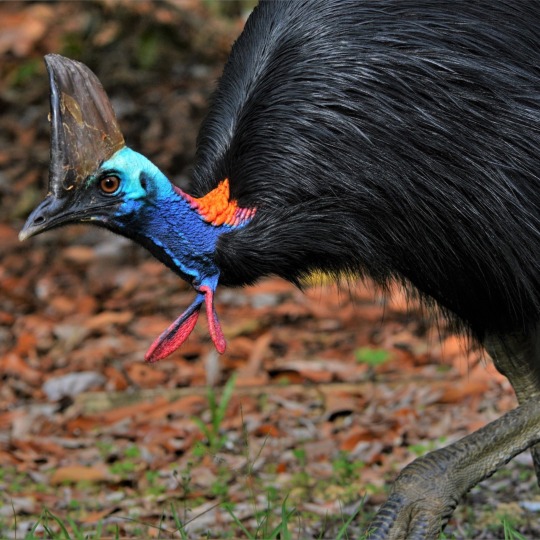
Remember to read about the contestants before voting!
Superb Fairy Wren
The Superb Fairy Wren is a little guy local to southern Australia! The females look much less fancy, but are still adorable. They even have a cute little dance they do to attract mates, using their beautiful feathers in a full dissolution. There are actually many different kinds of fairy wrens. Learn More!
Southern Cassowary
Everyone has heard tales of the Southern Cassowary. With long, gut-wrenching claws and an aggressive and territorial demeanor, the Cassowary is a very scary bird. However, their diet mainly consists of fallen fruit, and there actually are only two reported human deaths caused by cassowaries (one of these humans was trying to beat it to death with a stick). They also mainly attack or charge because of expecting food from humans after being fed by them for a while. Learn More!
(Superb Fairy Wren photo by Michael Livingston)
(Southern Cassowary photo by David Hollie)
1K notes
·
View notes
Photo

Southern Cassowary
339 notes
·
View notes
Photo
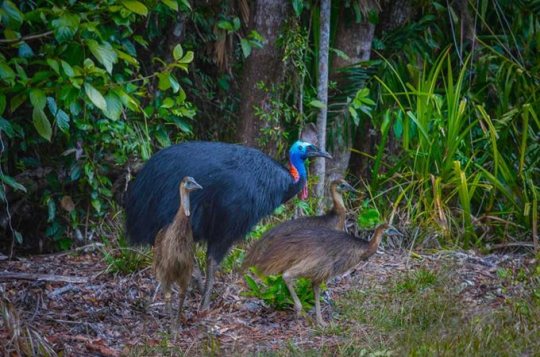
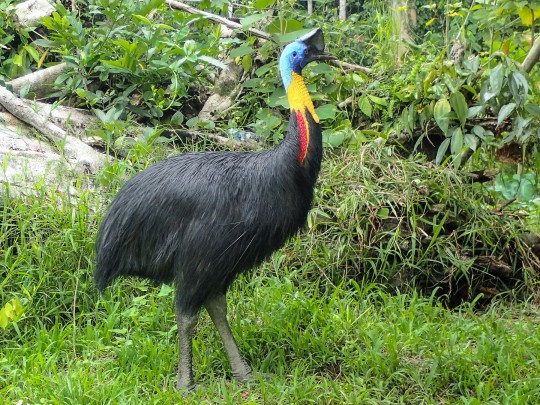
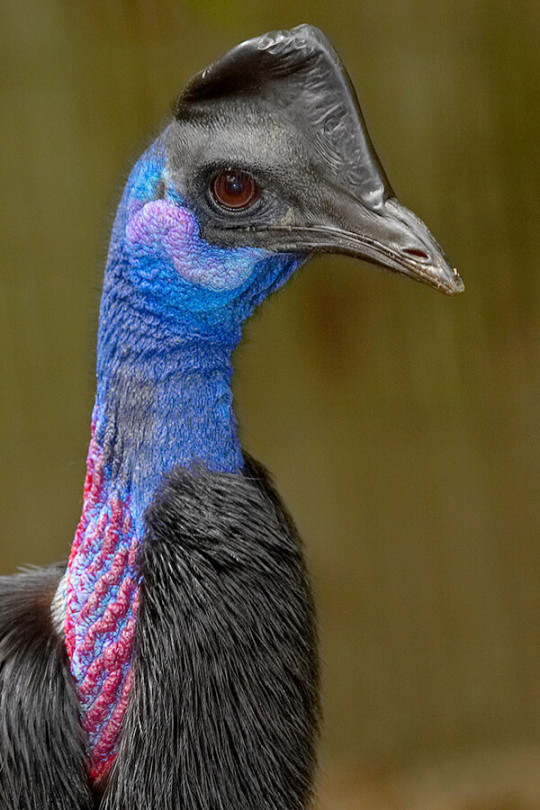
Carve Out Some Time for the Cassowary
Famous for their bright colors and short tempers, cassowaries are a group of flightless birds in the genus Casuarius. There are three species: the Northern Cassowary (C. unappendiculatus) which is found in New Guinea; the Southern Cassowary (C. casuarius), native southern New Guinea and northern Australia; and the Dwarf Cassowary (C. bennetti), endemic to New Guinea and the surrounding islands. All three species prefer tropical forests, though they are known to venture into savannahs, wetlands, and suburban areas in search of food.
Cassowaries are mainly active at dawn and dusk, and spend the time in between in their nests-- large pads of vegetation built on the ground. They opportunistic omnivores; their primary source of food is fruit and fungi, but they will also eat insects, frogs, fish, birds, small mammals, and carrion when available. Much of the fruit they eat is swallowed whole, which makes cassowaries invaluable for spreading seeds throughout their range. Additionally, due to their large size, adult cassowaries have no natural predators, and will aggressively defend their young from predators like snakes, monitor lizards, birds of prey, and wild dogs. When startled this birds can run up to 50 kph (31 mph), or lash out with their powerful legs.
Members of the Casuarius genus are solitary, save for the reproductive season. This season runs from May to September, when fruit is most abundant. Males maintain and defend territories, and call to attract mates. These calls are extremely loud, and at one of the lowest frequencies of any known bird, at about 23 Hertz. When a female approaches, the male crouches and allows the female to inspect him. She may also chase him, typically into water where the two perform a ritualistic fight before she submits. After laying her eggs, the female will move on to another male’s territory.
The eggs are extremely large and bright green, and usually laid in clutches of four. The male alone tends these eggs, incubating them and maintaining the nest for 50-52 days. The chicks that emerge stay with him for an additional 8-9 months until they become independent. Individuals take up to three years to become fully mature, and the average lifespan of wild Casuarius is anywhere from 30 to 50 years.
Southern Cassowaries are the largest of the three species, at up to 1.8 m (5ft 11 in) tall and weighing 58 kg (130 lbs) on average. Females tend to be much larger than males, and the species is considered to be the largest in Asia and the 3rd largest in the world. The Dwarf Cassowary, as the name implies, is significantly smaller at only 1.5m (4ft 11in) tall and 26 kg (57 lbs) at maximum. Northern Cassowaries lie between the two extremes. While all three species have black bodies, the coloration of their heads and necks vary significantly. Both the Northern and Southern Cassowary species have wattles-- pouches of skin that dangle from the neck-- that can be red, gold, purple, or white, which contrasts sharply with their blue necks. The Dwarf Cassowary lacks a wattle, and has a darker blue neck. In addition, it has the smallest head crest, or casque,; the Southern Cassowary’s casque is blade-shaped, and larger than the Dwarf Cassowary’s. The Northern Cassowary’s casque is more flared, and the largest of the three species.
Conservation Status: The Dwarf and Northern Cassowary species are considered Near Threatened and Least Concern respectively by the IUCN, while the Southern Cassowary is classified as endangered. All three are threatened primarily by habitat loss.
If you like what I do, consider leaving a tip or buying me a ko-fi!
Photos
Steve Parish
Kevin Schafer
San Diego Zoo
#northern cassowary#southern cassowary#dwarf cassowary#cassowary#Casuariiformes#Casuariidae#paleognaths#birds#tropical forests#tropical forest birds#tropical rainforests#tropical rainforest birds#savannahs#savannah birds#wetlands#wetland birds#asia#southeast asia#Papua New Guinea#australia#oceania
173 notes
·
View notes
Photo

cassowaries studies with reference the pictures on wikipedia and 1 stock photo
190 notes
·
View notes
Text
For #WorldCassowaryDay:
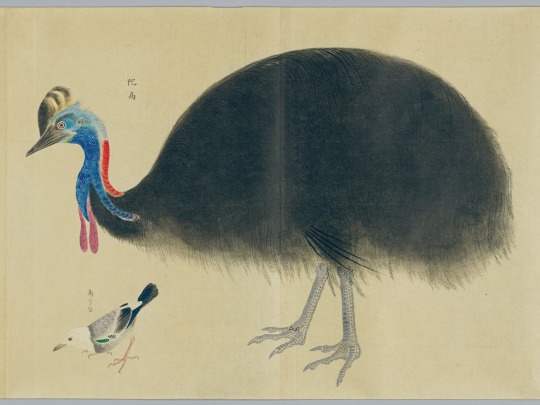
Cassowary recorded in Illustrated Scroll of Birds (Chōrui zukan) Vol.1, Meiji Japan, late 19th c.
Harvard Art Museums 1985.721.1
🆔 Southern Cassowary aka Double-Wattled Cassowary (Casuarius casuarius), native to New Guinea/NE Australia/Aru Islands.
(All cassowaries are native to greater Australasia; they were first imported to Japan by Dutch traders in 1646.)
#animals in art#animal holiday#birds in art#illustration#19th century art#bird#birds#cassowary#Southern Cassowary#Double-Wattled Cassowary#Japanese art#East Asian art#Asian art#scroll#Illustrated Scroll of Birds#Chōrui zukan#World Cassowary Day#natural history art#scientific illustration#ornithological illustration#Harvard Art Museums
29 notes
·
View notes
Text

Posting birds until I hit post limit: Southern cassowary
4 notes
·
View notes
Photo
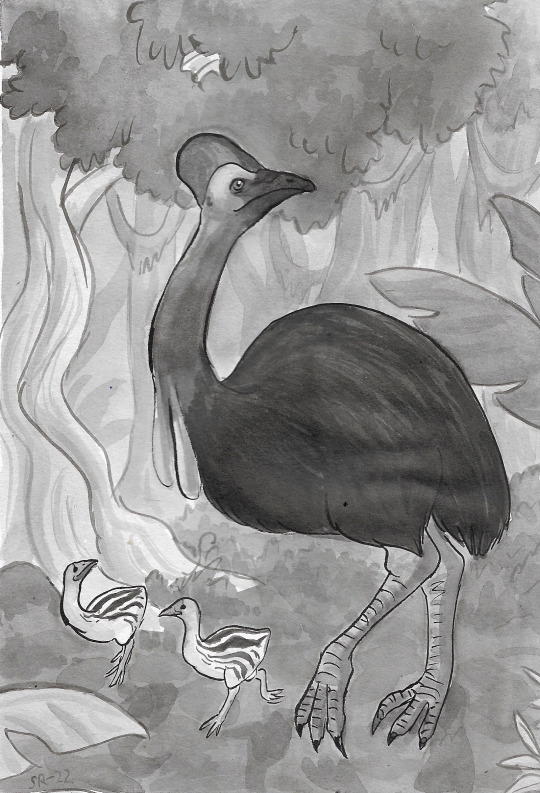
Inktober day 25: Southern cassowary
23 notes
·
View notes
Text
Southern Cassowary drawing

10 notes
·
View notes
Text

5 notes
·
View notes
Text

cassowaries are always so curious about the cameras! this one got to check out the camera and get some food in one go :)
#birds in general really#still part of my i didn't realise you could download images screenshot collection haha#i've tried adding alt text since you can click on it and read it now?#but let me know if it doesn't work and I'll switch back to how i usually do it#camera trap#southern cassowary#bird
2 notes
·
View notes
Text


Remember to read about the contestants before voting!
Southern Cassowary
Everyone has heard tales of the Southern Cassowary. With long, gut-wrenching claws and an aggressive and territorial demeanor, the Cassowary is a very scary bird. However, their diet mainly consists of fallen fruit, and there actually are only two reported human deaths caused by cassowaries (one of these humans was trying to beat it to death with a stick). They also mainly attack or charge because of expecting food from humans after being fed by them for a while. Learn More!
American Robin
Don’t be fooled by the American Robin, these guys are also little hunters. They don’t eat many fruits or berries, only eating them when necessary. Instead, they stalk and pounce on their prefered prey: earthworms. The common Robin behavior of running along the ground, stopping, and stretching out its head is the Robin hunting it’s next catch. They stop, look, and maybe even listen. They are mainly sight based predators, looking for movement of the earthworms. They are also possibly listening too, tilting their head to hear better. Learn More!
(Southern Cassowary photo by Luke Shelley)
(American Robin photo by Marky Mutchler)
125 notes
·
View notes
Text

It's September 26th, 🐦 World Cassowary Day. On this day, we celebrate and showcase this large, colorful, flightless, dinosaur-like bird and the efforts of conservationists who're working hard to protect them in their tropical rainforest habitats of Papua New Guinea and Australia. World Cassowary Day was created to draw international attention to why cassowaries are globally important and why they deserve our protection.
Cassowaries are a keystone species critical to the survival of the rainforests in which they live because they spread the seeds of the unique rainforest trees. By protecting their homes, we also protect the homes of many other unique and endangered animals including the tree kangaroo, spectacled flying fox (bat) and mahogany glider (possum) – not to mention many extremely ancient plants found nowhere else on the planet. ☮️ Peace… Jamiese of Pixoplanet
#jamiese#pixoplanet#cassowary#birds#bird#wildlife#australia#nature#rainforest#daintree rainforest#queensland#mission beach#animals#daintree#southern cassowary#see australia#wet tropics#cassowary coast#conservation#cassowary bird#australian birds#this is queensland#north queensland#animal#zoo#dinosaur#save the rainforest#kuranda#cassowaries#birds of australia
3 notes
·
View notes
Text
My favourite ratities
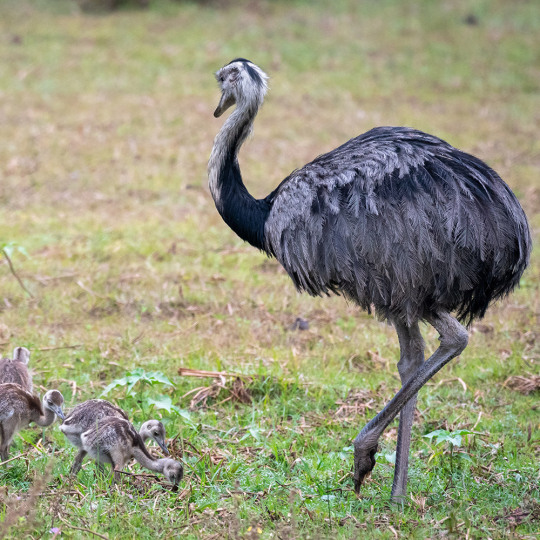





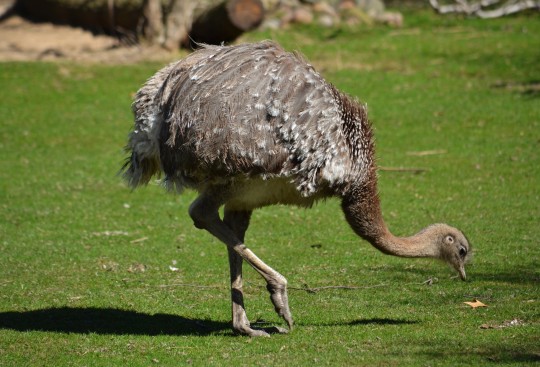



#ratite#ratities#flightless bird#american rhea#common ostrich#darwin's rhea#emu#great spotted kiwi#northern cassowary#puna rhea#somali ostirich#southern brown kiwi#southern cassowary#rhea#ostrich#kiwi#cassowary#favourites#favourite animals
2 notes
·
View notes
Text
Good Morning everyone!

Have a Cassowary.
0 notes
Photo

A new variant has been added!
Southern Cassowary (Casuarius casuarius)
© Ben Keen
It hatches from absent, brown, colorful, dark, dense, enormous, glossy, immature, juvenile, large, other, red, similar, striped, and tropical eggs.
squawkoverflow - the ultimate bird collecting game
🥚 hatch ❤️ collect 🤝 connect
1 note
·
View note
Text

Casoar à casque - Il est considéré comme l'oiseau le plus dangereux du monde. Il est réputé agressif et serait capable de tuer un adversaire grâce à un seul coup de patte, avec sa griffe aussi aiguisée qu'un poignard. Certains spécimens n'hésitent pas à pénétrer dans les habitations ou à charger les voitures. Il est considéré comme ayant le même niveau de dangerosité qu'un alligator.
Lieu : Zoo d'Amiens Métropole
#animaux#animals#animaux sauvages#wild animals#photo#photo animalière#animals photography#zoo#oiseau#bird#casoar#casoar à casque#southern cassowary
0 notes